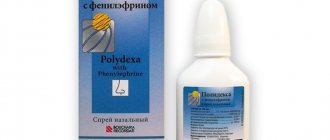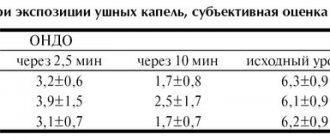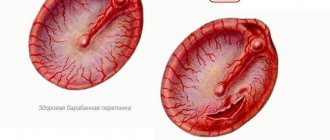Otirelax, instructions for use (Method and dosage)
Otirelax ear drops are instilled into adults, after preheating the solution to body temperature, into the external auditory canal 2-3 times a day, 4 drops for 7-10 days. If there is no effect on the 2-3rd day of instillation, it is necessary to adjust the treatment. When prescribing the drug in combination with other drugs in the form of ear drops, a 30-minute interval between instillations should be maintained. It is important - before starting the procedure, you need to check the condition of the eardrum Otirelax for children - instillation is possible for children of different ages, including newborns.
Otirelax ear drops dropper bottle 15ml
A country
Romania
The country of production may vary depending on the batch of goods. Please check with the operator for detailed information when confirming your order.
Active substance
Lidocaine + Phenazone
Compound
sodium thiosulfate pentahydrate, ethanol 96%, glycerol, sodium hydroxide (1M solution), purified water.
pharmachologic effect
Combined preparation for local use. It has a local anesthetic and anti-inflammatory effect. Phenazone is an analgesic-antipyretic with anti-inflammatory and analgesic effects. Lidocaine is a local anesthetic. The combination of phenazone and lidocaine promotes a faster onset of anesthesia, and also increases its intensity and duration.
Indications for use
For local symptomatic treatment and pain relief in adults and children (including newborns) with: - otitis externa; - in complex therapy of otitis media with an intact eardrum; - barotraumatic otitis.
Mode of application
Drops are instilled into the external auditory canal, 3-4 drops 2-3 times a day. To avoid contact of the cold solution with the auricle, the bottle should be warmed in the palms before use. The course of treatment should not exceed 10 days. Use during pregnancy is possible only if the expected benefit to the mother outweighs the potential risk to the fetus. If it is necessary to use during lactation, the issue of stopping breastfeeding should be decided. Possible use in children (including newborns)
Interaction
Currently, there is no information on the interaction of the drug Otirelax with other drugs.
Side effect
Possible: local allergic reactions, irritation and hyperemia of the ear canal, minor pain during use.
Contraindications
- perforation of the eardrum; - increased sensitivity to the components of the drug; - increased sensitivity to pyrazolone derivatives.
Overdose
Data on overdose of the drug Otirelax are not provided.
special instructions
It is necessary to ensure the integrity of the eardrum before starting to use the drug. If the drug is used with a perforated eardrum, the active substances can penetrate into the systemic bloodstream, which can lead to complications. The duration of use of Otirelax is no more than 10 days, after which the prescribed therapy should be adjusted. When using the drug Otirelax in combination with other ear drops, it is necessary to maintain an interval of at least 30 minutes between instillations. It should be borne in mind that the drug contains an active component that can cause positive test during doping control.
Analogs
Level 4 ATC code matches: Antipyrine
Otipax
Otinum
Structural analogues according to the ATC code and the active substance are: Folicap , Otipax , Lidocaine + Phenazone .
Reviews about Otirelax
There are quite a lot of reviews about the drug. In most cases, patients note its high effectiveness, manifested in the rapid relief of pain and inflammation in the ears. The ease of use, low price, and the possibility of purchasing the drug over-the-counter are also noted. “... the child is five years old, the doctor diagnosed otitis media and prescribed Otirelax drops. After instillation, the pain in the ear decreased and the child slept well. Using Otirelax for five days completely eliminated this problem.”
Otirelax
Otirelax is a combination drug for local symptomatic therapy and pain relief for external and otitis media, widely used, including in pediatric practice. Has a local analgesic and anti-inflammatory effect. External and otitis media occupy one of the leading positions in the structure of ENT pathology and are of great medical, social and economic importance. The number of patients suffering from inflammatory diseases of the outer and middle ear does not decrease even despite the impressive therapeutic arsenal, including surgical methods, medications, and various methods of physical treatment. Otitis externa, as its name suggests, is an inflammation of the external auditory canal that extends to the pinna. Strange as it may sound to the untrained reader, the majority of cases of otitis externa are recorded not in winter, but in summer. As a rule, otitis externa develops when pathogenic bacteria come into contact with damaged skin of the outer ear. Skin damage may be associated with any skin diseases, mechanical trauma, diabetes mellitus, metabolic disorders, or high humidity. The traditional “culprits” of external otitis are Pseudomonas aeruginosa (in most cases), Staphylococcus aureus, Staphylococcus epidermidis, beta-hemolytic streptococci, fungi of the genera Candida and Aspergillus. Acute otitis media most often pathogenetically “buds off” from any acute respiratory disease. In this case, the inflammatory process from the nasal cavity spreads to the eustachian tube, tympanic cavity, and mastoid cells.
The causative agents of acute otitis media are the same bacteria that most often infect the respiratory tract: Streptococcus pneumoniae, Haemophilus influenzae, Moraxella catarrhalis, Streptococcus pyogenes, Staphylococcus aureus. Treatment of otitis media involves a whole range of therapeutic measures. The use of otirelax ear drops can be an important component of symptomatic analgesic therapy for external and otitis media. The drug contains two active ingredients: phenazone and lidocaine. Phenazone is a non-steroidal anti-inflammatory drug, a pyrazolone derivative. It has analgesic, anti-inflammatory and antipyretic (antipyretic) effects. In its analgesic and antipyretic activity it is close to salicylates. Pharmacological effects are associated with the ability to inhibit the activity of cyclooxygenase 1 and 2, as a result of which the synthesis of pain and inflammation mediators prostaglandins is suppressed and the pathways for converting arachidonic acid into biologically active substances are disrupted. When used topically, phenazone has an anti-inflammatory effect. Lidocaine is a local anesthetic. The combination of phenazone and lidocaine provides a rapid onset of intense and long-lasting anesthesia. Both of these substances are not absorbed into the systemic circulation (albeit, provided that the eardrum is intact), which avoids clinically significant side effects. Otirelax ear drops should be instilled 3-4 drops 2-3 times a day. Before use, it is recommended to warm the bottle with drops in your palms. The duration of therapy should not exceed 10 days.
Price, where to buy
The price of Otirelax ear drops in a 15 ml bottle varies between 127 -142 rubles per package. You can buy ear drops without any difficulty in most pharmacies in Moscow and other Russian cities, as well as in the pharmacy chain of Ukraine.
- Online pharmacies in RussiaRussia
- Online pharmacies in KazakhstanKazakhstan
ZdravCity
- Otirelax ear drops 15mlK.O.Rompharm Company S.r.L.
RUB 289 order
Pharmacy Dialogue
- Otirelax (ear drops, bottle-drops, 15 ml) Rompharma
290 rub. order
- Otirelax ear drops dropper bottle 15mlRompharma
RUB 282 order
show more
Otirelax ear drops (40mg+10mg)/1g 17.1g No. 1
Name
Otirelax.
Release forms
Ear drops.
INN
Lidocaine + phenazone.
Description
Transparent solution without visible particles.
Compound
1 g contains active substance: 40 mg phenazone, 10 mg lidocaine hydrochloride. Excipients: sodium thiosulfate, ethyl alcohol, purified water, sodium hydroxide (1M solution), glycerin.
Pharmacotherapeutic group
Other drugs for the treatment of diseases in otology. Analgesics and anesthetics in combination. ATC drug code S02DA30.
Pharmacological properties
Pharmacodynamics
Phenazone (pyrazole derivative) has anti-inflammatory and analgesic effects. Lidocaine (amide group anesthetic) has a local analgesic effect.
Pharmacokinetics
The drug does not penetrate the body if the eardrum is intact.
Indications for use
Local symptomatic treatment of painful conditions of the middle ear, provided that the integrity of the eardrum is maintained: - acute otitis media with congestion; - otitis media, as a complication after the flu; - barotraumatic otitis media.
Contraindications
— violation of the integrity of the eardrum; - hypersensitivity to the components of the drug.
Interaction with other drugs
Currently, there is no information on interactions with other drugs.
Precautionary measures
It is necessary to ensure the integrity of the eardrum before using the drug. If the drug is used with a perforated eardrum, the drug can penetrate into the systemic bloodstream and lead to complications. After instillation, screw the cap tightly and hide the bottle in the packaging to protect the drug from exposure to light. Information for athletes: the medicinal product contains an active component that can give a positive reaction during doping control. Otirelax is indicated for use in children.
Pregnancy and lactation
There is no data on the safety of using Otirelax during pregnancy or breastfeeding. The drug is not prescribed to pregnant women, except in situations of absolute necessity and only after assessing the benefit to the mother and the possible risk to the fetus. Also, there is no data on the transfer of drug components into breast milk. It is recommended to avoid the use of this drug in nursing mothers.
Impact on the ability to drive vehicles and operate machinery
The drug does not affect the ability to drive a car or work with complex machinery, machines or any other complex equipment that requires increased attention.
Directions for use and doses
Otirelax is applied topically by instilling 4 drops into the external auditory canal 2-3 times a day. To avoid contact of the cold solution with the auricle, the bottle should be warmed in the palms before use. The duration of use of Otirelax is no more than 10 days, after which the prescribed treatment should be reconsidered.
Use in children
Otirelax is indicated for use in children from birth 2-3 times a day, 3-4 drops.
Overdose
There is no data regarding overdose for external use.
Side effect
There is a risk of local allergic reactions, irritation and hyperemia of the ear canal.
Conditions and shelf life
Store at a temperature not exceeding 25°C in the original packaging. Keep out of the reach of children. Shelf life: 3 years when stored in unopened original packaging. After opening the bottle, the drops should be used within 4 weeks.
Conditions for dispensing from pharmacies
Dispensed from pharmacies with a doctor's prescription.
Package
Plastic dropper bottle 15 ml. Dropper bottle in a cardboard box along with an insert.
Buy Otirelax ear drops (40mg+10mg)/1g in fl-cap 17.1g in pack No. 1 in the pharmacy
Price for Otirelax ear drops (40mg+10mg)/1g in fl-cap 17.1g in pack No. 1
Instructions for use for Otirelax ear drops (40mg+10mg)/1g in fl-cap 17.1g in pack No. 1




